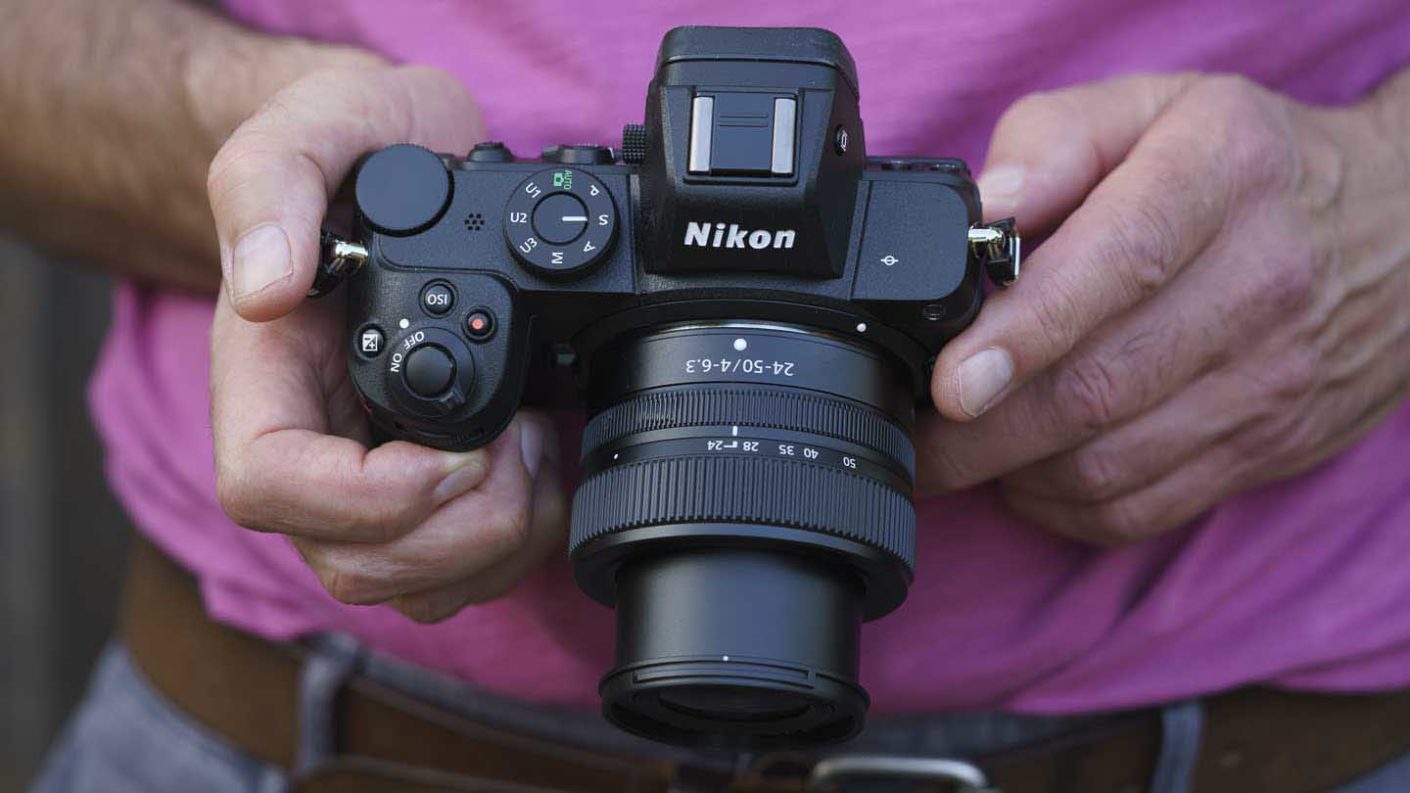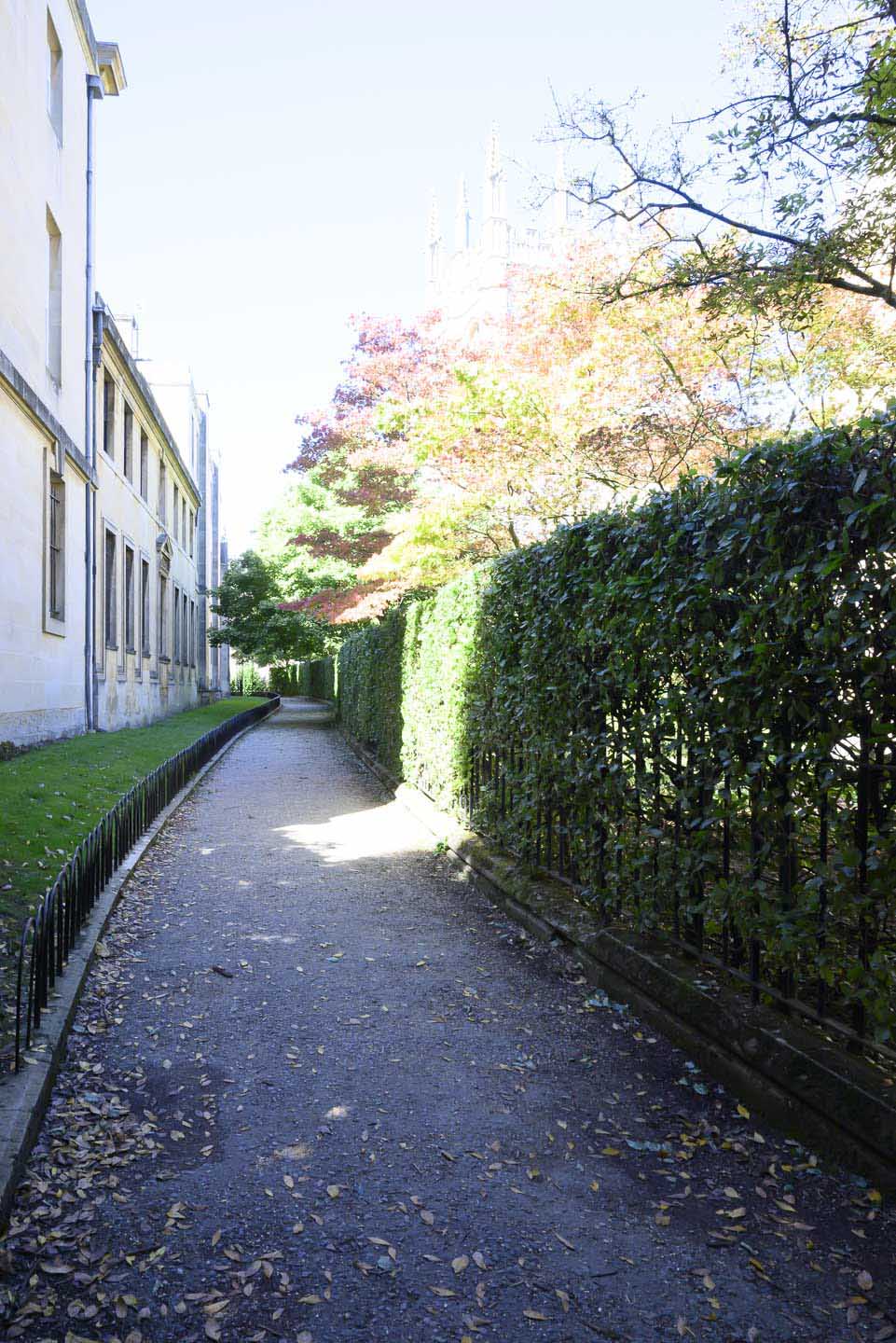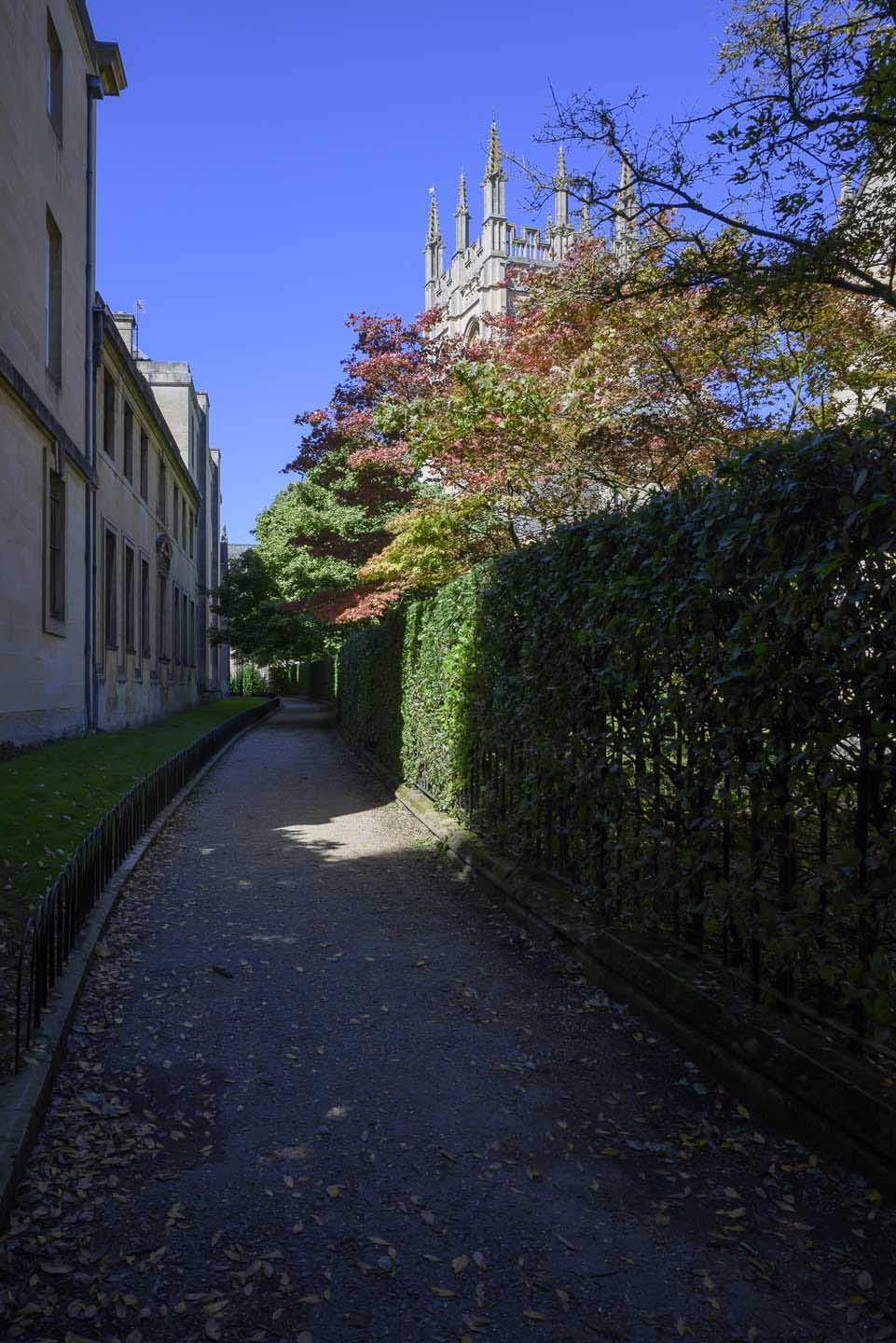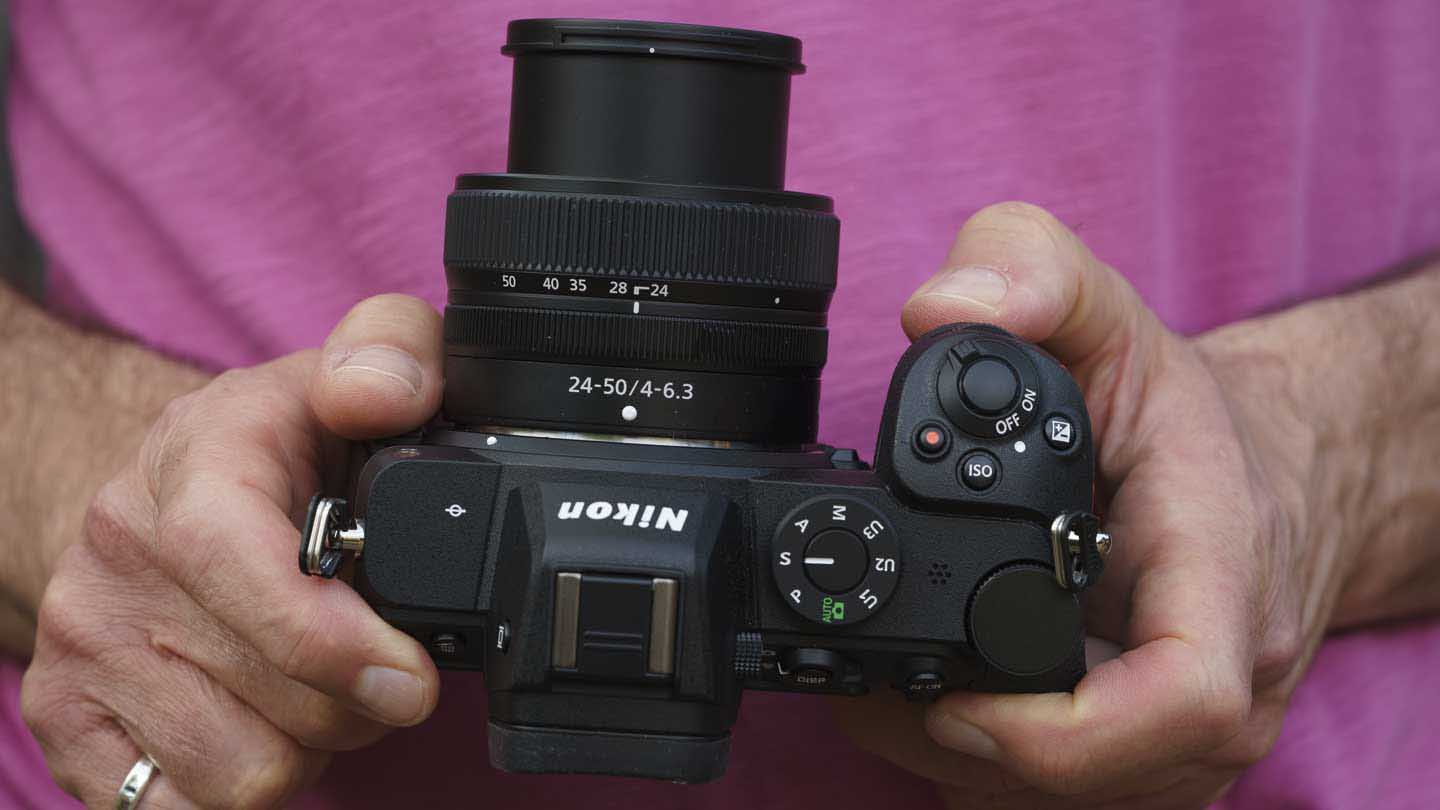Almost two years after announcing its first full-frame mirrorless cameras, the Z6 and Z7, Nikon has revealed the Nikon Z5. It sits below the 24Mp Z6 (and the 45Mp Z7) in the company’s line-up of full-frame mirrorless cameras. It’s designed to be the entry-point for full-frame mirrorless photography and it’s aimed at existing Nikon DSLR users as well as new photographers.
Our Verdict
In many respects the Nikon Z5 is a great camera and combined with the compact Nikkor Z 24-50MM F/4-6.3 kit lens, it makes a very attractive choice of full-frame camera for travel or everyday photography – even if the zoom range is a little limiting. A maximum continuous shooting rate of 4.5fps seems a little behind the times, and it would be nice to be able to capture the full width of the sensor when shooting 4K video, but the handling is superb, there are dual SD card ports and SnapBridge system pings great-looking images quickly to your phone ready for sharing.
For
- Compact size and full-frame sensor
- Nikon Z mount
- Best in class viewfinder
Against
- Maximum continuous shooting of 4.5fps (frames per second)
- 1.7x crop applied to 4K video
- 24-50mm kits lens is compact but has a limited zoom range
What is the Nikon Z5?
You can order the Nikon Z5 from Wex Photo Video and Park Cameras in the UK, and Adorama and B&H Photo Video in the USA.
Specification
- Camera type: Full-frame (FX) mirrorless
- Announced: 21st July 2020
- Lens mount: Nikon Z
- Sensor: 24.3Mp full-frame CMOS
- Autofocus system: 273-point Hybrid (combines phase and contrast detection) with Eye AF for humans and animals
- Stabilisation: 5-axis in body
- Viewfinder: Electronic 0.39-inch 3,690,000-dot OLED
- Screen: 3.2-inch 1,040,000-dot tilting touch-screen
- Maximum video resolution: 4K (with 1.7x crop)
- Maximum continuous shooting rate: 4.5fps
- Storage: Dual SD/SDHC/SDXC UHS-II
- Connectivity : Wi-Fi, Bluetooth, SnapBridge
- Dimensions (W x H x D): 134 x 100.5 x 69.5mm (5.3 x 4.0 x 2.8inches)
- Weight: 590g/ 1 lb. 4.9 oz body only, 675g / 1 lb. 7.9 oz with battery and memory card but without body cap
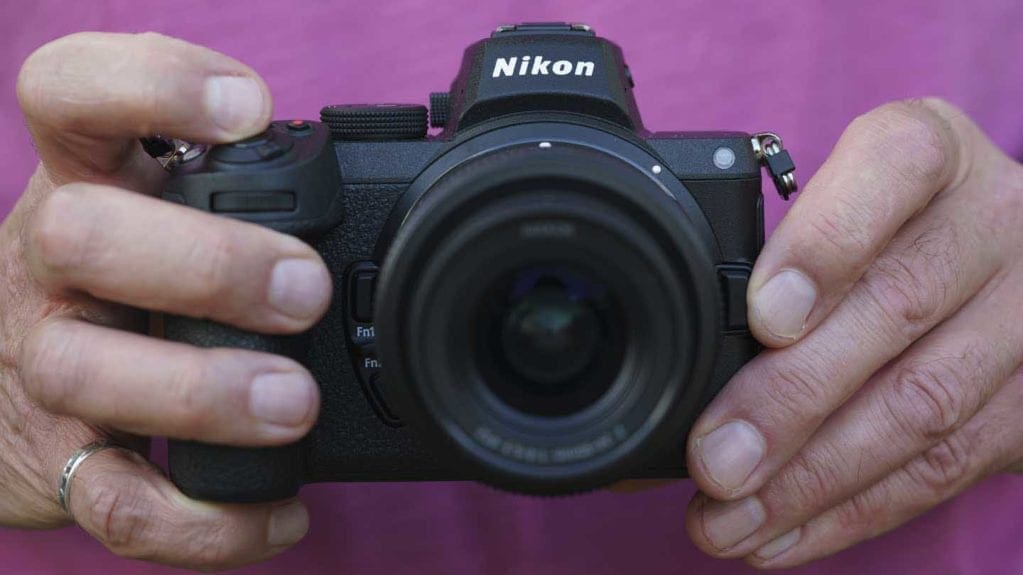
Features
Although the 24.3Mp Nikon Z5 has a similar pixel count to the 24.5Mp Z6, the two cameras don’t have the same sensor. While the Z6 has a back-side illuminated sensor design, the Z5’s sensor is a standard CMOS chip. That helps to keep the price down a little.
However, Nikon has still embedded phase detection pixels on the Z5’s sensor and the hybrid AF system has a total of 273 user-selectable autofocus (AF) points.
Enticingly, there’s also Eye-Detection AF that is programmed to lock on to human eyes and Animal-Detection AF for getting cats’ and dogs’ eyes sharp.
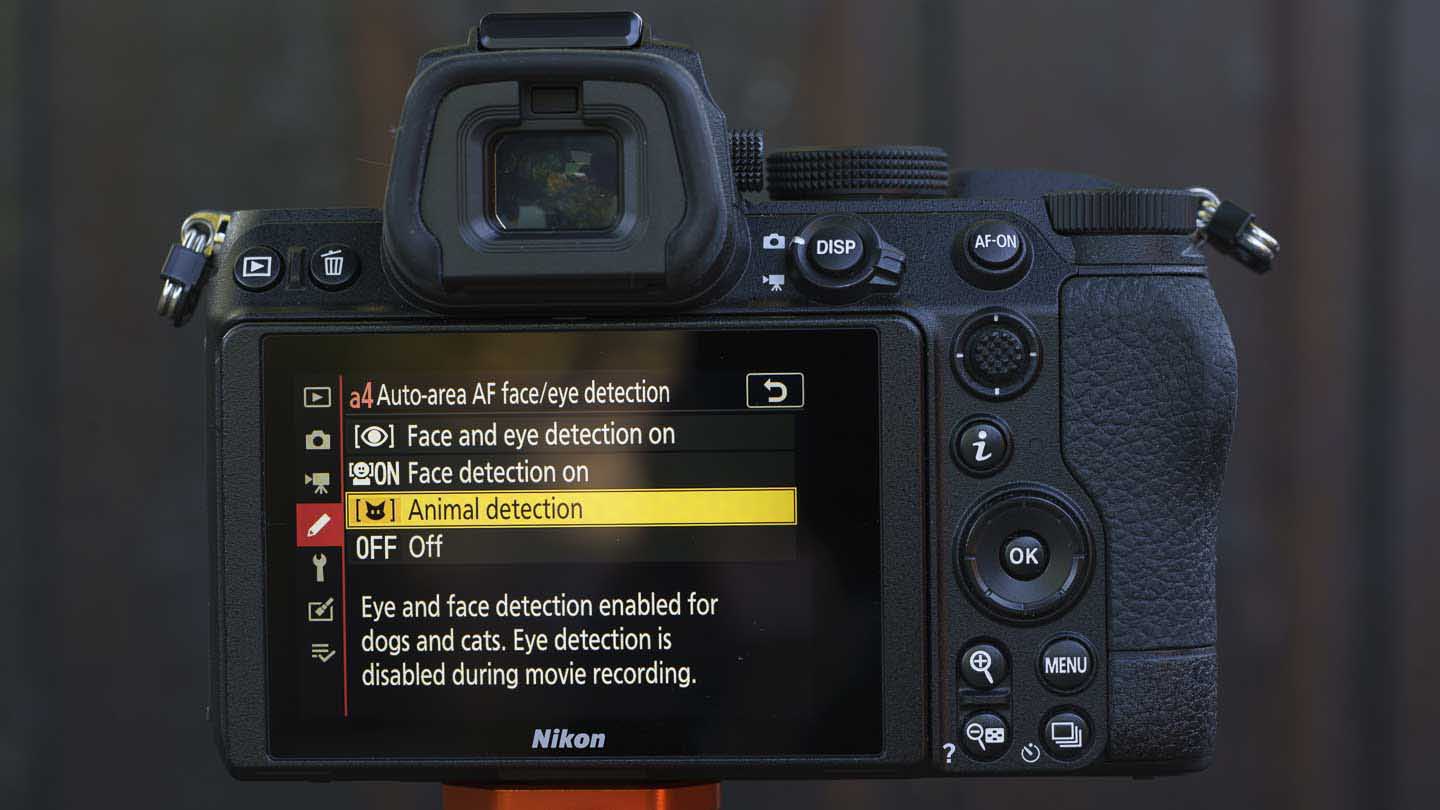
Naturally, the Z5 has Nikon’s relatively new Z mount, which was launched with the Z6 and Z7 in November 2018. This mount has a much wider mouth than the older F-mount and therefore has greater scope for fast lens development.
While Nikon may be pitching the Z5 as a first full-frame mirrorless camera, it hasn’t omitted one of the most prized features – in-body image stabilisation (IBIS). This operates over 5 axes and is claimed to give up to 5EV shutter speed compensation
Video
As you’d expect, the Nikon Z5 is capable of shooting 4K video. However, there’s a 1.7x magnification factor to take into account. That means that the Nikkor 24-50mm f/4-6.3 lens gives framing comparable with a 41-85mm. That’s a bit disappointing, but as the screen doesn’t flip around to the front, it’s unlikely that the Z5 will be used for hand-held arm’s-length vlogging.
Despite its entry-level billing, Nikon has included mic and headphone ports on the Z5, and there’s an HDMI connection that is thought to provide a clean feed.
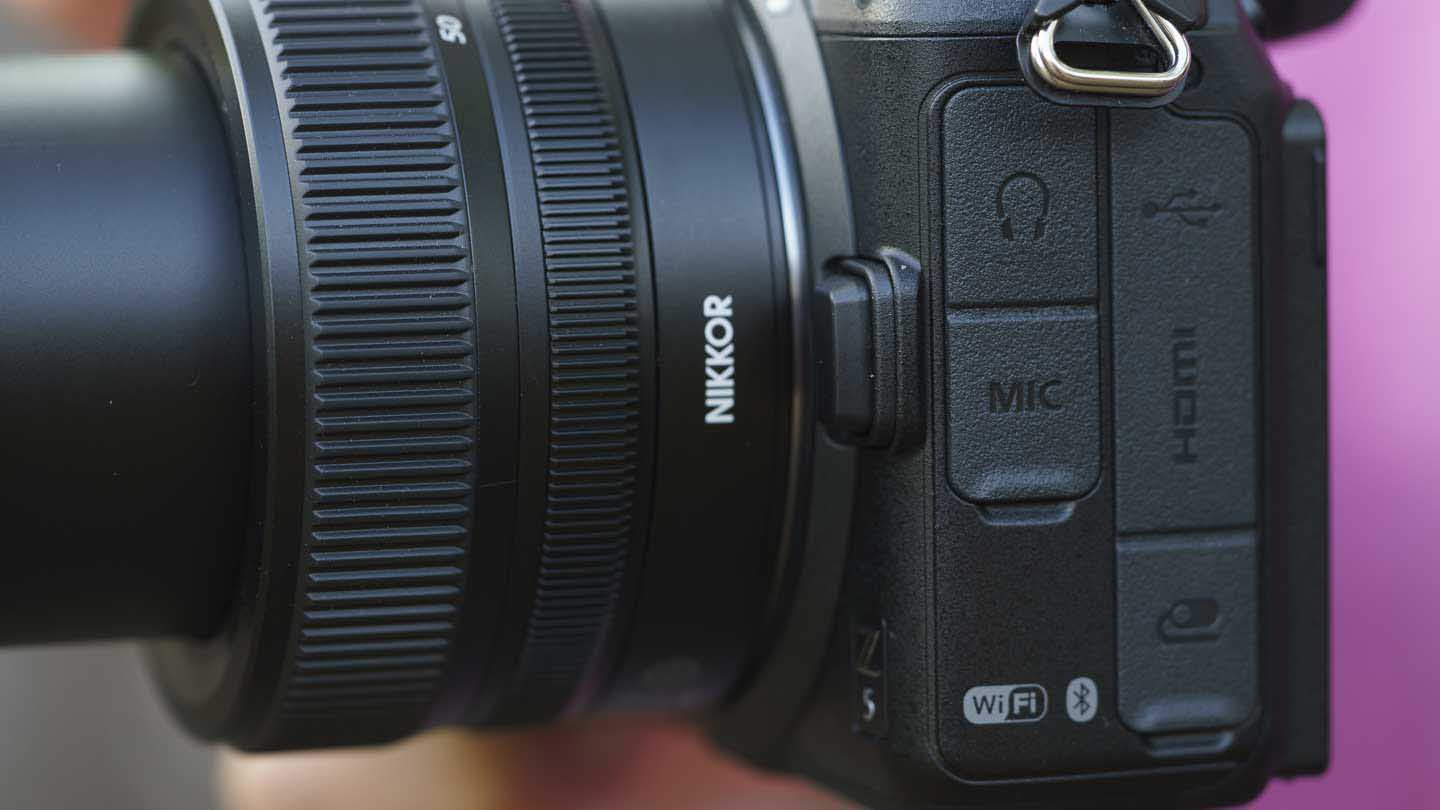
Dual card slots
Although the Nikon Z6 and Z7 were generally well-received, they have been criticised for having just one XQD memory card slot. Nikon hasn’t gone down this route for the Z5, it has two card slots, both of which accept SD-type cards and are UHS-II compatible.
That’s handy for extra storage or for back-up in the event of a card failure. Alternatively, video can be saved to one card and stills to another.
Opting for SD cards helps to keep the price down for the Nikon Z5’s intended owners. It also takes up less space than two XQD cards would. It will be interesting to see what Nikon does when it brings out a mirrorless equivalent of the Nikon D6 or upgrades to the Z6 and Z7.
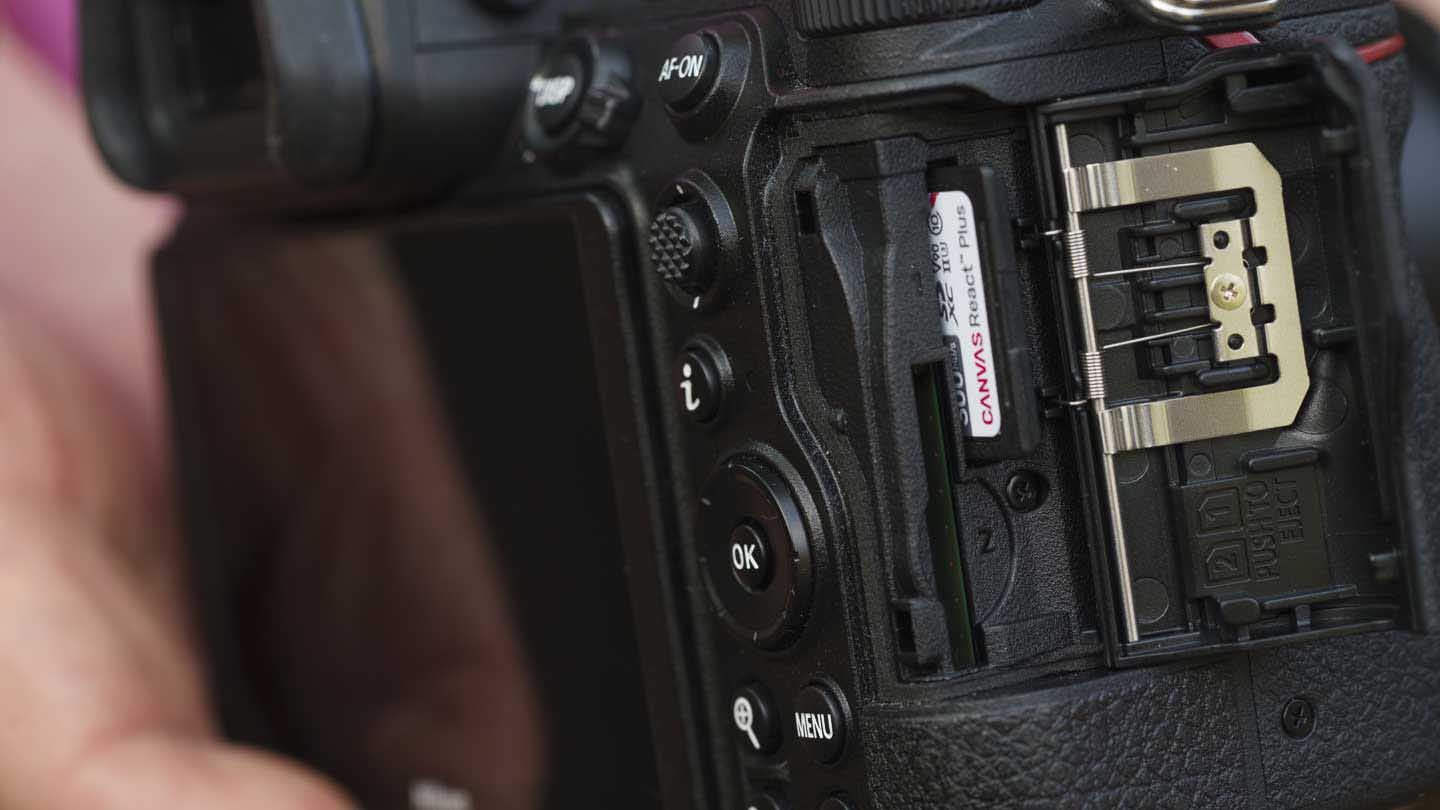
Battery
Although the Nikon Z5 introduces a new battery, the EN-EL 15C, the camera can accept EN-EL 15B batteries. In addition, the camera can be powered via its USB Type-C connection.
I popped the battery into a Z7 and I can confirm that it’s compatible with that camera. As a result, it should also work with the Z6.
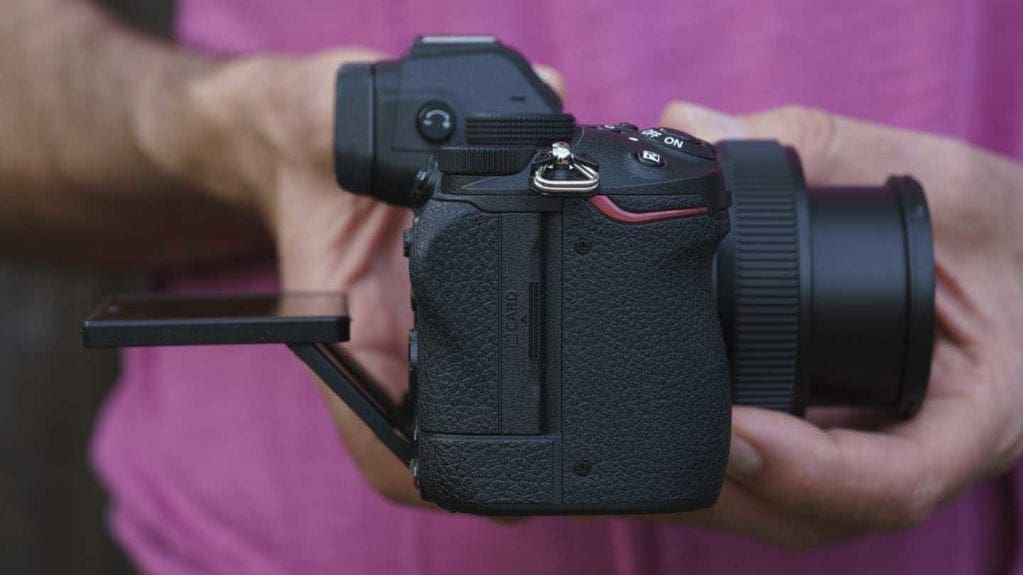
Build and Handling
Although the top-plate is a little different, and their listed dimensions aren’t identical, the Z5 appears to have the same bodyshell as the Nikon Z6 and Z7. Consequently, it has a decent grip on the front and the thumb ridge is very effective.
The control layout on the back of the Nikon Z5 is also the same as on the Z6 and Z7. That means it has a joystick for shifting the AF point around while you look in the viewfinder and there’s an ‘i’ button that gives a quick route to a 12-feature menu.
There’s also a switch for swapping quickly between stills and video shooting.

The top of the Z5 is a little different from Nikon’s existing full-frame mirrorless cameras. For example, the mode dial, which is on the far left of the Z6 and Z7 top-plates, is just to the right of the viewfinder. That means that there isn’t a secondary screen, but that’s not a major loss as the Z5 has a tilting touchscreen.
It’s good to see that despite being an ‘entry-level’ full-frame camera, the Nikon Z5’s exposure mode dial has three customisable settings alongside the usual options of auto, program, aperture priority, shutter priority and manual.
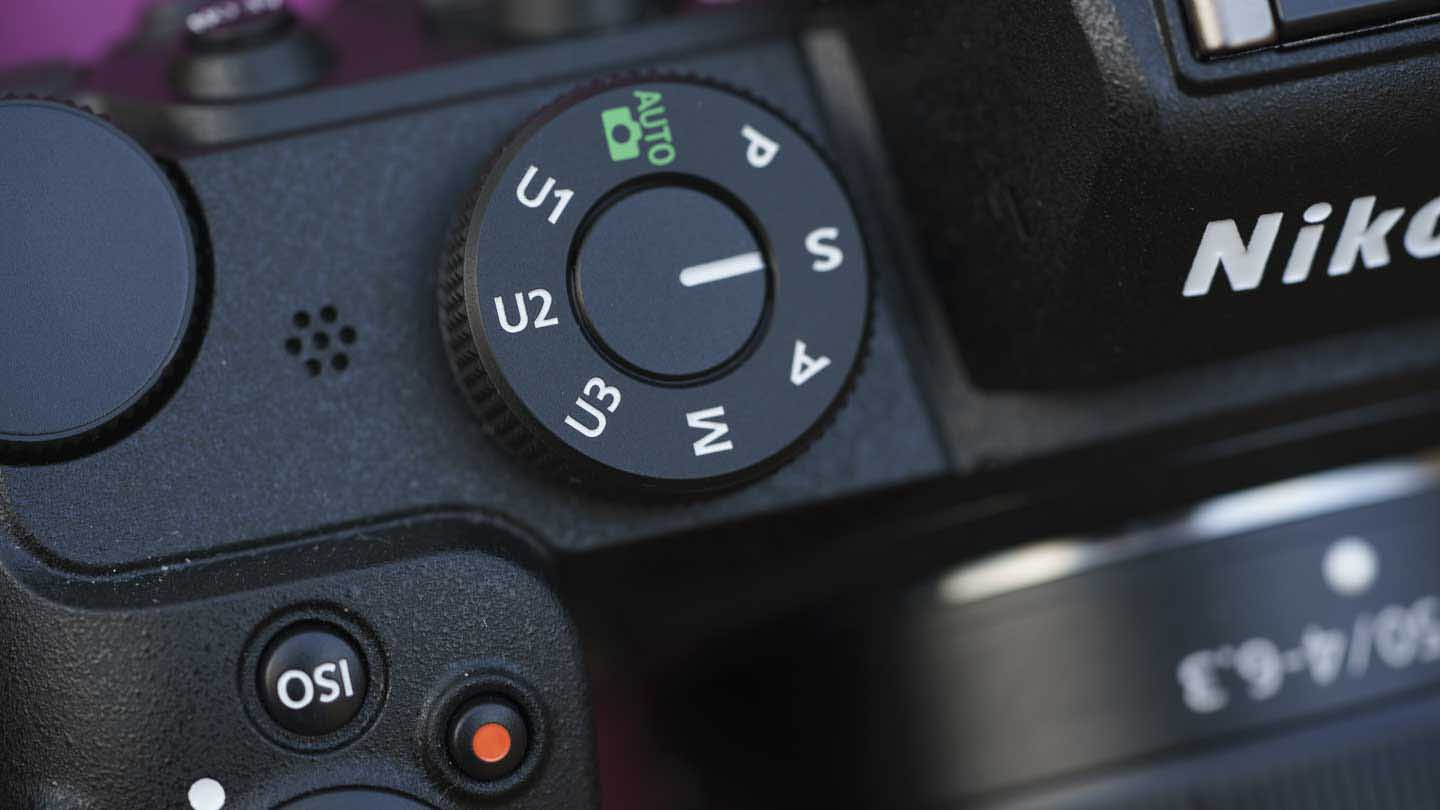
Further good news is that the video record, ISO and exposure compensation buttons are all around the shutter button in the same location as on the Z6 and Z7.
In addition, there’s a dial towards the back of the top-plate and one just below the shutter button, so you can adjust settings quickly while your eye is at the viewfinder.
It means that the Z5 could work well as a second body to the Z6 or Z7.
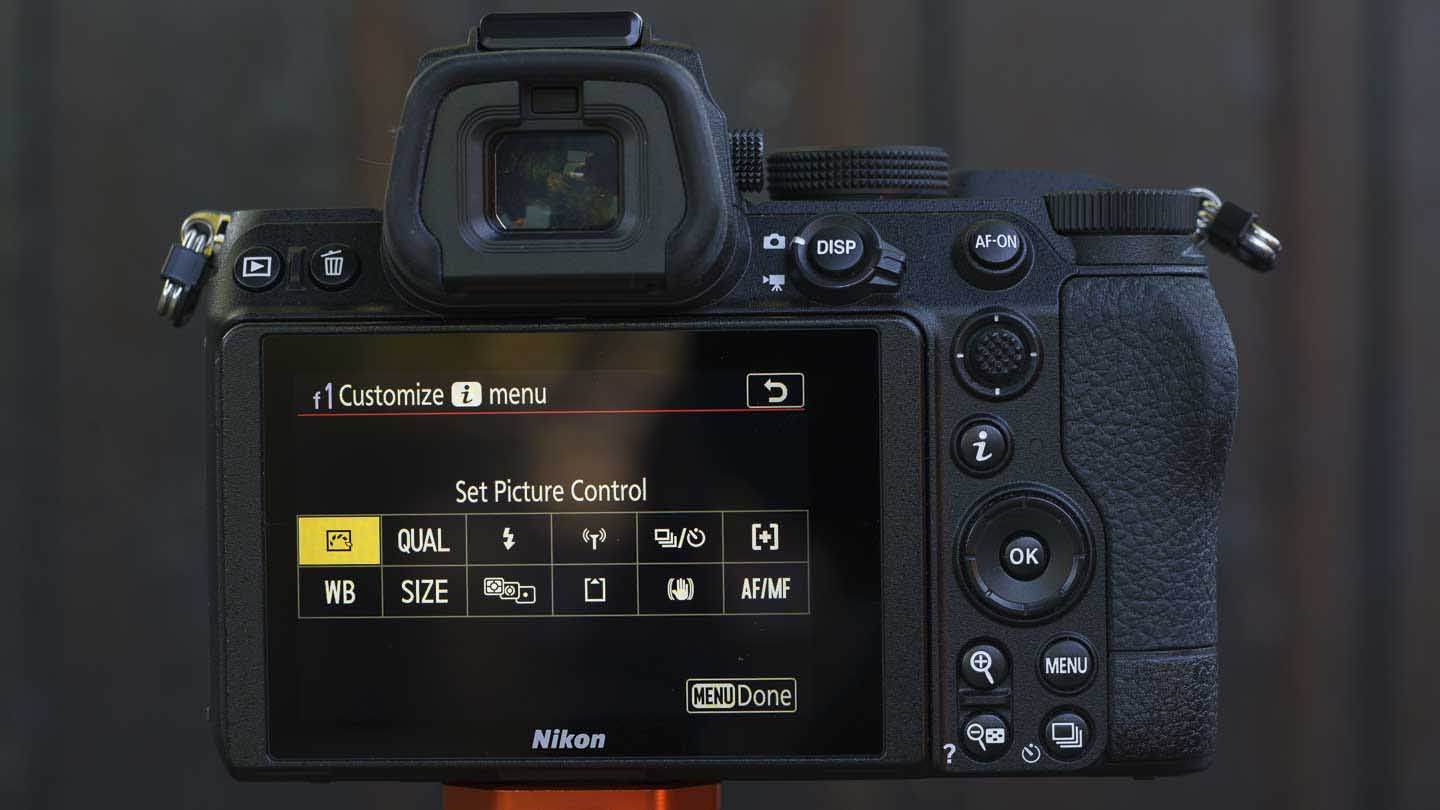
Nikon Z5 screen and viewfinder
As I mentioned earlier, the Nikon Z5 has a tilting touchscreen. This can be tipped up for viewing from below head-height, or down for viewing from above head-head. However, it can’t tip right down for viewing from in front of the camera like the Z50’s screen.
That means it’s not helpful for selfies, but that’s probably not a major deal for most prospective Z5 owners.
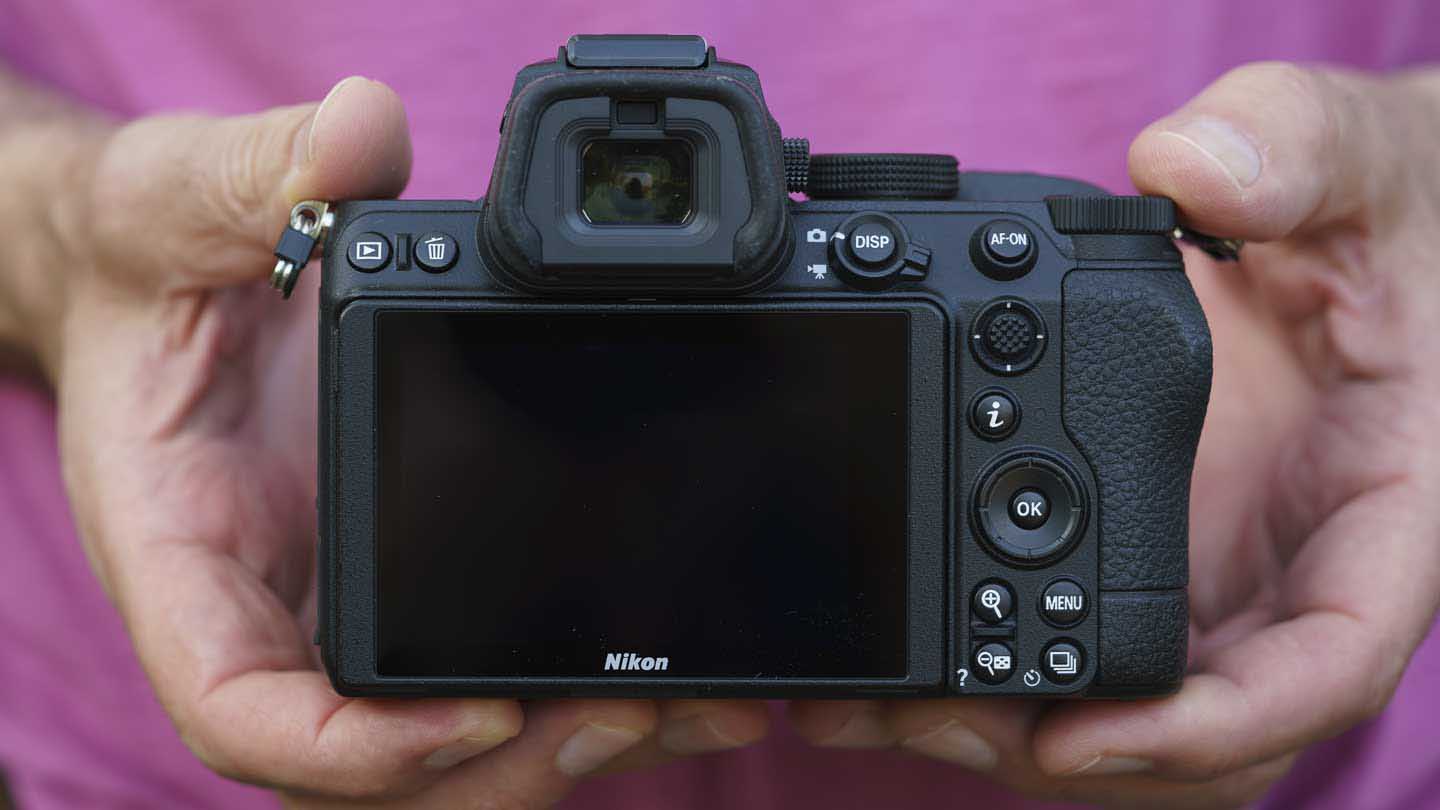
At 3.2-inches across the diagonal, the Z5’s screen is bigger than average, while its 1,040,000-dot resolution is respectable rather than groundbreaking. It provides a good, clear view and isn’t more affected by reflection and glare than any other camera screen.
Unlike Sony, Nikon makes good use of its cameras’ touchscreens. That means that, although there are plenty of buttons and dials, you can access and adjust most features with a tap on the screen. It makes navigating the menus and making setting selections much more intuitive than button presses, but you can do that if you prefer.
With 3,690,000dots, the 0.39-inch type OLED electronic viewfinder is very good for an entry-level full-frame camera. In fact, it’s the same viewfinder as in the Z6 and Z7, which is great news for a more entry-level camera. It’s very good and produces a really natural view.
However, I had a problem with the eye sensor that switches between the viewfinder and the screen. On several occasions, there was a delay before the screen activated after I took my camera away from my eye. It wasn’t an issue of proximity to the sensor, I checked that.
Although I couldn’t see anything over the eye sensor, removing the viewfinder’s eyecup and giving the sensor a wipe with a lens cloth resolved the problem, but I had to do it a few times over the days I had the camera in for testing.
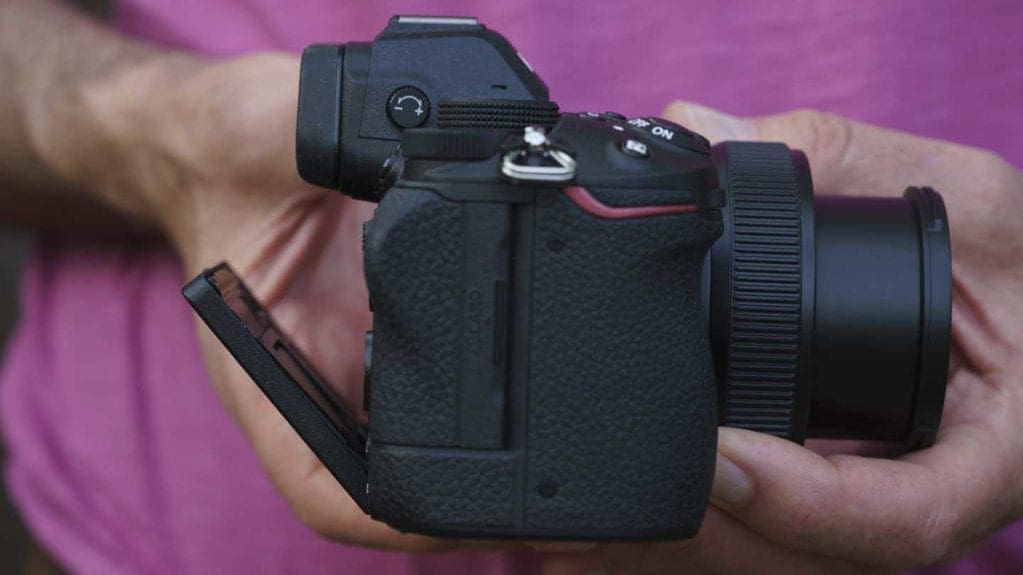
Performance
Nikon’s recent cameras have impressed for their detail gathering and dynamic range, and the Z5 is no different in that respect. It generally produces very attractive images and video.
Nikon Z5 Autofocus Performance
At 4.5fps, the Z5’s maximum continuous shooting rate isn’t going to win any awards, but that is still fast enough for shooting many sports. The autofocus system is also good in decent light, but at its longest point the Nikkor 24-50mm f/4-6.3 kit lens has a maximum aperture of f/6.3, and that takes a toll.
I was able to get sharp images on my dog racing around, but in the low light of a woodland on an overcast day, the camera struggled to get him sharp as he leapt over a log. To be fair, this is a tough challenge that demands very fast subject acquisition as he appears from behind the log, and a faster shooting rate than 4.5fps would be helpful.
I had plenty of opportunities to test the Z5’s Animal and Human detection system and it’s pretty good. It’s not foolproof and it doesn’t detect my dog’s eyes quite as reliably as the Sony A7 III, but it’s very handy to have.
Having shot extensively with the Canon EOS R6, I can confirm that the Nikon Z5’s Eye detection can’t match it. The Canon R6’s Subject detection, which can be set to Human or Animal, and paired with Eye detection, is astonishingly good. But then it costs almost £800 / $800 more body-only than the Nikon Z5 does with a kit lens.

Nikon Z5 Image Quality
At ISO 51,200, the highest native sensitivity setting, the Nikon Z5 produces respectable results. However, some areas in the Jpegs look slightly diffused and a little smoother than I’d like. Simultaneously captured raw files have visible chroma noise (coloured speckling) with Adobe Camera Raw’s default noise reduction settings applied. A slight tweak of the Color Noise Reduction slider, however, hides the coloured speckling.
Dropping to ISO 12,800 produces very impressive results. There’s plenty of detail in both files types and the edges look natural. There’s almost no noise visible and there’s no smudging in out of focus areas on the Jpegs.
Nikon Z5 Dynamic Range
A camera’s dynamic range is a measure of the range of tones that it can capture in a single image. I’m not able to measure this scientifically, but I can investigate its practical implications for photographers by looking at the Z5’s exposure latitude. This is basically the flexibility of the file to cope with adjustment, and the Nikon Z5’s low ISO files really impress in this regard.
For example, a badly underexposed raw file, shot at ISO 100, can be successfully brightened by as much as 5EV (the maximum adjustment possible in Adobe Camera Raw). The colours still look good and noise is kept in check well. This means that there’s plenty of scope to adjust images taken on bright sunny days when there are bright highlights and deep shadows. You’re able to bring detail into the shadows to create natural-looking images with less extreme contrast.
The images below demonstrate what can be done. The first image was dramatically underexposed to ensure the highlights on the leaves and the sunlit building were recorded.
The middle image was edited in Adobe Camera Raw, pushing the Exposure control to +5EV. This results in the highlights being lost, but there’s plenty of detail in the shadow areas.
The image on the right was also adjusted in Adobe Camera Raw but the Exposure was only pushed to +2 and the Shadows, Blacks, Highlights and Whites were each adjusted to create a balanced exposure that looks natural.
- Orignial File
- Exposure increased by 5EV
- Exposure increased by 2EV and Highlights, Whites, Shadows and Blacks adjusted to balance
Colour and White Balance
Nikon gives you lots of control over the colour and white balance of the images from the Z5. On the whole, I think it does a great job in the default settings. In fact, I prefer the results I got from the Z5 to those I got from the flagship Nikon D6.
However, it’s to be expected that certain conditions require a little more input from the photographer. The forest floor on a rainy day, for example, looks a bit too magenta, and the Shade or Cloudy white balance setting is sometimes preferable to the Auto options. Alternatively, you can set the white balance manually to ensure you get exactly what you want. It’s not crucial if you’re shooting raw files, but if you’re shooting video, it’s advisable to get everything right in-camera.
The Nikon Z5 has an extensive range of Picture Controls including the Creative Picture controls that take things a little further than usual. I really enjoy using these. They’re not as extreme as some of the filter effects you see on some other cameras, but there’s an excellent selection and using them doesn’t make the viewfinder or screen ‘laggy’.
I especially like ‘Bleached’ which produces a high-contrast, low-saturation result.
Nikon Z5 IBIS (In-Body Image Stabilisation) Performance
The Nikkor 24-50mm f/4-6.3 kit lens isn’t stabilised but, as mentioned earlier, the Z5 has 5-axis in-body image stabilisation (IBIS). This is claimed to extend the hand-holdable shutter speed by up to 5EV.
Using the kit lens at its longest point would traditionally require a shutter speed of at least 1/50sec to ensure that images aren’t spoiled by camera-shake. However, I was able to drop the shutter speed to 1/6sec and get around 80-90% of my images sharp – that’s when checking them at 100% on a computer screen. Dropping another stop to 1/3sec (4EV reduction from 1/50sec) reduced this figure to around 50-60%.
A 1-second exposure proved to be a step too far and although some of my images were almost acceptable, they weren’t quite sharp.
I usually look to find the shutter speed that gets roughly half of my images sharp, which in this case is 1/3sec. That means if I shoot at 1/3sec with the lens at 50mm, I generally need to shoot 2 images to ensure I have one that’s completely sharp.
The Z5 IBIS also works in video mode, and although it can’t really cope with the movement created by walking with the camera as you film, it does an excellent job when you’re standing still hand-holding the camera. There were times when I was shooting 4K video and I was crouched down, feeling a little unsteady, but the camera delivered nice smooth footage.
Sample Images
Follow the link to browse and download full-resolution images
[FAG id=100956]
Sample Video
The Nikon Z5 arrived on the first rainy day in ages, but we charged the battery and went out to shoot some 4K footage. That noise you can hear, recorded via the internal mic, is rain on the trees.
For this video, we kept just about everything in auto although the exposure mode was manual (with auto ISO). The sensitivity (ISO) was set to Auto and was generally around ISO 4000, occasionally higher.
The focusing was set to Full-time AF using Auto-area AF and occasional Subject Tracking. In the gloomy conditions, the Auto-area AF system wavered a little occasionally, but it generally performed well. The Subject Tracking is very useful for a variety of subject, but especially when you’re moving the camera during the shoot.
You can preorder the Nikon Z5 from Wex Photo Video and Park Cameras in the UK, and Adorama and B&H Photo Video in the USA.
Verdict
The Nikon Z5 has a great combination of features. The tilting touchscreen once again proves its worth, and while I’d prefer a variable screen, it’s a bonus over a fixed screen on a camera that is designed to be an affordable step into full-frame mirrorless photography.
The viewfinder is also impressively well specified and should ensure a comfortable transition for anyone moving from an optical to an electronic viewfinder.
It’s also great to see dual memory cards, but the crop applied to 4K video and the mediocre maximum continuous shooting rate of 4.5fps are disappointing.
While the Z5 is available body-only in the USA, initially in the UK it will only be sold with the new Nikkor Z 24-50MM F/4-6.3 kit lens. This lens is claimed to be the smallest full-frame zoom lens available. It makes for a very compact full-frame kit, however, the zoom range feels a little limiting. It would also be nice to have a brighter maximum aperture at 50mm, but Nikon also offers larger, faster alternative lenses such as the Nikkor Z 24-70mm f/2.8 S and Nikkor Z 24-70mm f/4 S.
If you’re looking for a full-frame camera to carry everywhere, the Nikon Z5 24-50mm kit makes a great choice. However, further down the line, you are likely to want to invest in a lens with a more flexible zoom range and faster maximum aperture.
